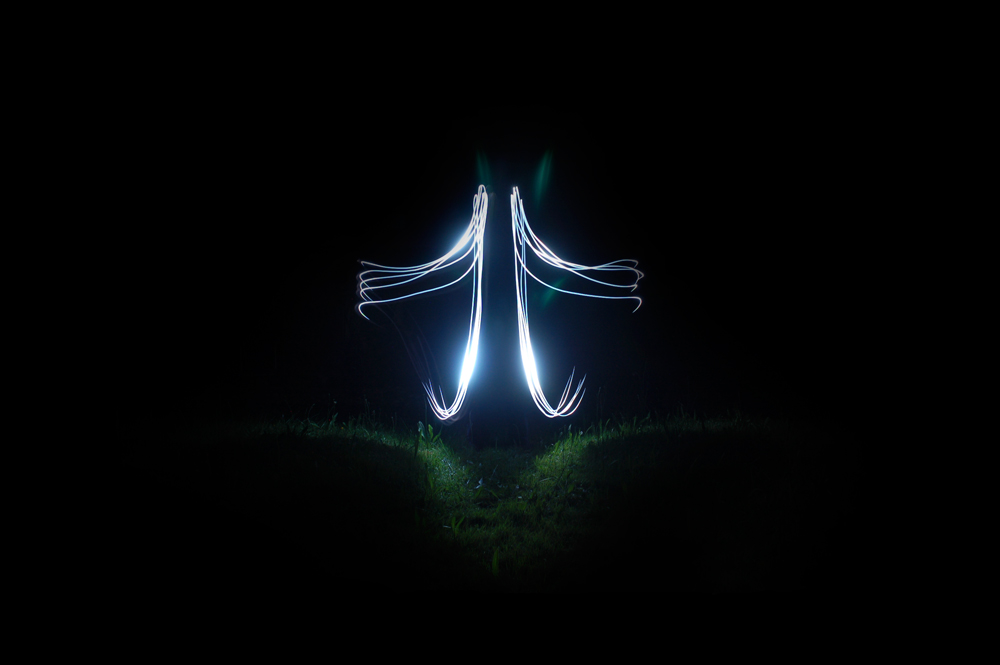“There is nothing eternal but that which loves and can be loved, and love is ever climbing towards the consummation when such shall be the universe – imperishable, divine.” George MacDonald
“For every sentence (in the Upanishads) deep original and sublime thoughts arise, and the whole is pervaded by a high and holy and earnest spirit. In the whole world there is no study so beneficial and so elevating as that of the Upanishads. They are destined sooner or later to become the faith of the people.” Schopenhauer
Five years ago, I wrote a post on the evolution of consciousness which was based on a couple of books I came across on ancient Sanskrit writings contained in the Upanishads: https://rickbellingham.com/2017/06/06/evolution-of-consciousness/
Last week, I was browsing through our local library and found the book, The Upanishads, by Eknath Easwaran with introductions and Afterword by Michael Nagler. It turned out not only to be a treasure of ancient wisdom, but also a trigger for this post on the roots of our spiritualism.
Reading that book led me to the insight that the finite is impermanent and the infinite is imperishable. I figured that insight was worth deeper pondering, reflection, and contemplation. So that’s what I’ve been thinking about for the past few weeks.
Two principles emerged from that journey: 1) If you identify with your body or mind, you will experience impermanence, and 2) If you don’t identify with anything but dwell in the joy of who you are, then your home is imperishable. As a result of that insight, I’ve incorporated a new practice into my meditation. First I lift healing earth energy up through my feet, out to the space around me, and beyond to infinite space; I then bring that imperishable cosmic energy in, down and through my impermanent body back to the earth. The energy washing through my body feels cleansing. You may want to give it a try – it’s very soothing and sublime.
In this post, at the risk of being overly simplistic, I will summarize the main themes of spiritual instruction from multiple sources – Before the Common Era (BCE) – related to this idea of impermanent AND imperishable. To me, the primary sources are Hinduism, Judaism, Taoism, Buddhism, and Gnosticism. Fair warning: this may not be a journey you are willing to take, but I will share some thoughts just in case.
Hinduism. 1500 BCE. Spiritual instruction, in the oral tradition, originated as long as 3,500 years ago in India. This oral instruction continued to evolve over time and began to crystallize in the form of the Upanishads. 108 written Upanishads originated as early as 1200. Shankara commented on 10 in the 8th century CE. Some of the key themes of the Upanishads are: 1) the imperishable self (soul) is eternal witness – beyond the senses and the ego, beyond conflicts and expectations, indivisible and interdependent; 2) we are at one in harmony with the universe. Thus, focus on the beyond, rise above ordinary experiences and responses, love diversity and focus on unity; and 3) we are not separate – we are all at one with the divine spark.
Reading through 15 of the 108 Upanishads in Easwaran’s book – much like sampling 12 of the 88 Buddhist temples on the Shikoku pilgrimage – was delightful. Enough to satisfy the palate and fill me up without stuffing myself to the point of indigestion. Maybe Schopenhauer was right – reading the Upanishads is an elevating experience that may sooner or later evolve to a common faith. Thank you Hinduism.
Judaism: 1,200 BCE: Most scholars attribute the thinking that culminated in the Torah to Moses and Maimonides. Whereas Moses may have been a legendary figure who lived in the 13th century, there is good evidence to suggest that Maimonides lived in the 12th century BCE. Their musings and revelations were curated and transmitted to later generations in the form of the Torah and Talmud. Most scholars agree that the Torah was written by multiple authors over a few hundred years. The Torah, of course, consists of the first five books of the Old Testament or the Pentateuch. The Talmud is a record of rabbinic debates on the teachings of the Torah. Both attempt to understand how we seek answers and apply them to the situations we are encountering. The Hebrew term Talmud (study or learning) commonly refers to a compilation of ancient teachings regarded as sacred and normative by Jews from the time it was compiled until modern times.
Although my daughter and grandchildren are Jewish, I am no authority on Judaism. What I can discern, however, is that the main theme running through the Old Testament is that we all struggle with the problem of evil – how can God be all-powerful yet allow evil to exist in the world? Other themes revolve around salvation, redemption, divine judgment, obedience, and faith. Clearly, we are still struggling with good and evil in the world and the boundaries seem to be blurring with more vehicles for spreading disinformation and less restraint for spewing blatant lies. We could use more discernment and discrimination in our spiritual lives. Thank you Judaism.
Taoism: 600 BCE: Ten years ago, I travelled to China to study for a month with Luke Chan, a qigong master and Taoism scholar. When I returned, I wrote the book Being at Home in the Universe – Building an Internal Space. Writing the book helped me summarize what I had learned in that intensive immersion experience. A few years later, Luke asked me to edit his book, 8 Secrets of the Tao Te Ching. Luke would send me a chapter every week or so, and I would dive into every detail. The experience gave me a much deeper appreciation of Taoism.
On the opening page, Luke writes:
“Greed has poisoned our souls. It has taken our humanity. Machines are meant to help humans live better, but they end up controlling us. Communication devices are meant to bring humans closer together, but they end up alienating us from each other. Airplanes and automobiles are meant to help us travel, but end up destroying our environment.
It’s time to wake up. Let’s be reminded of something we already know: Simplicity has power; self-reliance has power; loving ourselves has the power to bring happiness; loving others has the power to bring peace; loving nature has the power to ensure our children and their children have a fair chance to live.
To survive, we must change the old way of thinking that has created the problems of today to a new way of thinking for the solutions of tomorrow. “See beauty in. the ordinary; embrace simplicity.” Lao-tzu’s words have been echoing through space and time for 2,500 years. The Tao of the old can be a solution for the excesses of today.”
As I understand them, the core tenets of Taoism are love yourself, love others, and love nature. In his brilliantly researched (if not so brilliantly edited) book, based on a lifetime of living its tenets, Luke summarizes the eight key themes of Taoism: Tao, Oneness, Action, Silence, Breath, Peace, Contentment, Love. It seems to me that those themes are still relevant on our path to spiritual growth. Thank you Taoism.
Buddhism: 500 BCE: According to Luke, Buddhism is an off-shoot of Taoism. Others argue that it is an offshoot of Hinduism. We do know that the foundation for Buddhism is based on the teachings of Siddhartha Gautama whereas Taoism is based on the philosophical ideas of Lao Tzu. The main differences between Buddhism and Taoism revolve around the belief in human nature, the belief in God, and the belief in life after death.
In Buddhism there is no Self or soul. Life is simply a combination of five impermanent components: our physical body, our feelings, our ideas, our dispositions, and our consciousness. Taoism teaches that humans are harmonious with nature at birth and the goal is to return to that harmonious state as a natural mode of existence.
Both Buddhism and Taoism reject the idea of a personal god, but Buddhists believe there are divine beings who can live extended lives but are not eternal. Buddha is not considered a god – merely an extraordinary man. Taoists believe that the universe springs from the Tao – the natural order underlying the universe’s essence.
Reincarnation plays a role in both Buddhism and Taoism. This belief provides a source of peace and hope for believers and is a major part of each religion. Buddhists, however, believe in an endless cycle of birth, death and rebirth. This cycle can only be broken by achieving nirvana – thus, breaking the cycle of reincarnation is one of its central aims. Taoists, on the other hand, believe the soul is eternal and will eventually become one with Tao – the soul will never die but will only move to another body to be re-born as a different person until one achieves Tao.
For me, the main themes of Buddhism focus on non-attachment to the impermanent aspects of our existence, e.g. don’t get too attached to your money. The primary belief is that all suffering is caused by desires and can only be eliminated by the practice of non-attachment and following the 8 noble paths: Right view, right intention, right speech, right action, right livelihood, right effort, right mindfulness, and right concentration. Notice the overlaps between Luke’s 8 Secrets of the Tao Te Ching and the eight noble paths of Buddhism. Whether you consider them esoteric secrets or noble paths, all of them seem like meaningful guideposts for a more spiritual life. Thank you Buddhism.
Gnosticism: 100 CE: The discovery of 13 books containing 52 texts in the Nile River valley of Egypt in 1945 called Nag Hammadi opened the door for the history of early Christianism and the teachings of the four Gnostic gospels: the secret book of James, the gospel of Thomas, the book of Thomas, and the secret book of John. Although there is a lack of consensus whether Gnosticism predated Christianity or not, some teachings identified with Gnosticism may have emerged before Christianity. Others may have been developed apart from Christianity in heterodox Jewish circles and then adapted by Christian groups.
Some scholars suggest that the Essene community that emerged in the 2nd century BCE could have influenced not only New Testament writings but also the Gnostic gospels. These writings emphasized ritual purity, much like the Vedic texts that preceded the Upanishads.
One of my favorite authors, Elaine Pagels, is an American historian of religion at Princeton. She has conducted extensive research into early Christianity and Gnosticism and wrote the best-selling book, Gnostic Gospels. I highly recommend that book as well as many others she has written, e.g. The Book Your Church does not want you to Read, Why Religion, and Adam and Eve and the Serpent. The main themes in the Gnostic Gospels are: God is within, women are central, and Jesus, like all of us, was both human and divine. I might argue that Jesus’s divine spark burned much brighter than the spark in us ordinary mortals, but still . . . . . Thank you Gnosticism.
I’m not including Christianity and Islam here because they are Common Era religions AND, to me, they emphasize religious ritualism more than spiritual expansionism. Sadly, most religions have commercialized and politicized the spiritual wisdom derived from many sources. Oops, I probably just ticked off half of the world’s population, but I will stand by the comment. Maybe it’s a good thing I only have a few readers.
In closing, let me return to the opening quote by MacDonald. My dear friend of 50 years, Barry, has not only been a mentor to me for all those years but has also introduced me to sources I may have never found on my own: e.g. Gurdjieff, Reich, Nietzsche, etc. He is a big fan of George MacDonald. While I never went deeply down the MacDonald path, I resonated strongly with his quote that there is nothing eternal but that which loves and can be loved . . . . . ever climbing to an imperishable divine. Thus, the question of what is imperishable kept begging for my conscious attention.
For me, all of these ancient texts contain nourishment for our soul and can serve as foundational roots and guiding lights for whatever spiritual path we decide to take. I’m hoping that learning more about sacred wisdom BCE will help us to acknowledge good and evil (recognize, discern, discriminate); to accept our impermanence; to embrace the imperishable; to let go of attachments (identity, desire, greed); and to welcome love in this Common Era. May it be so.
Also published on Medium.




A thorough and “divine” journey! Thank you my friend ❤️